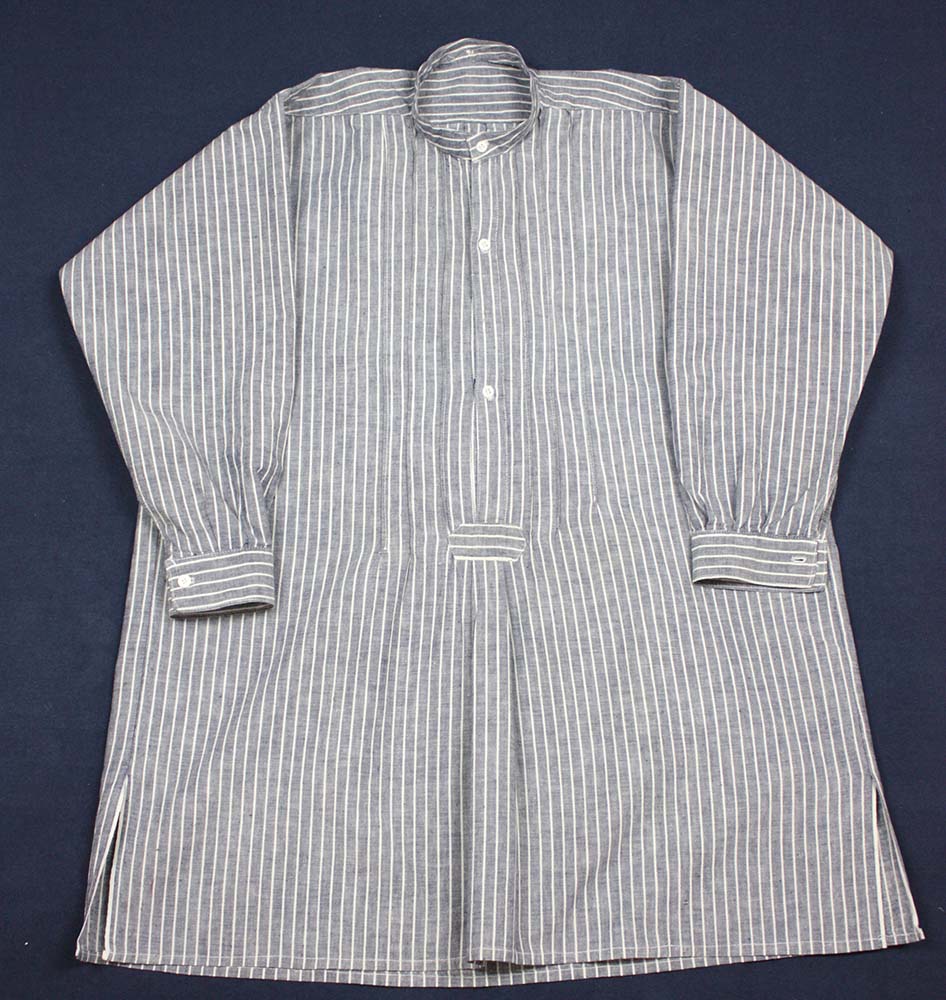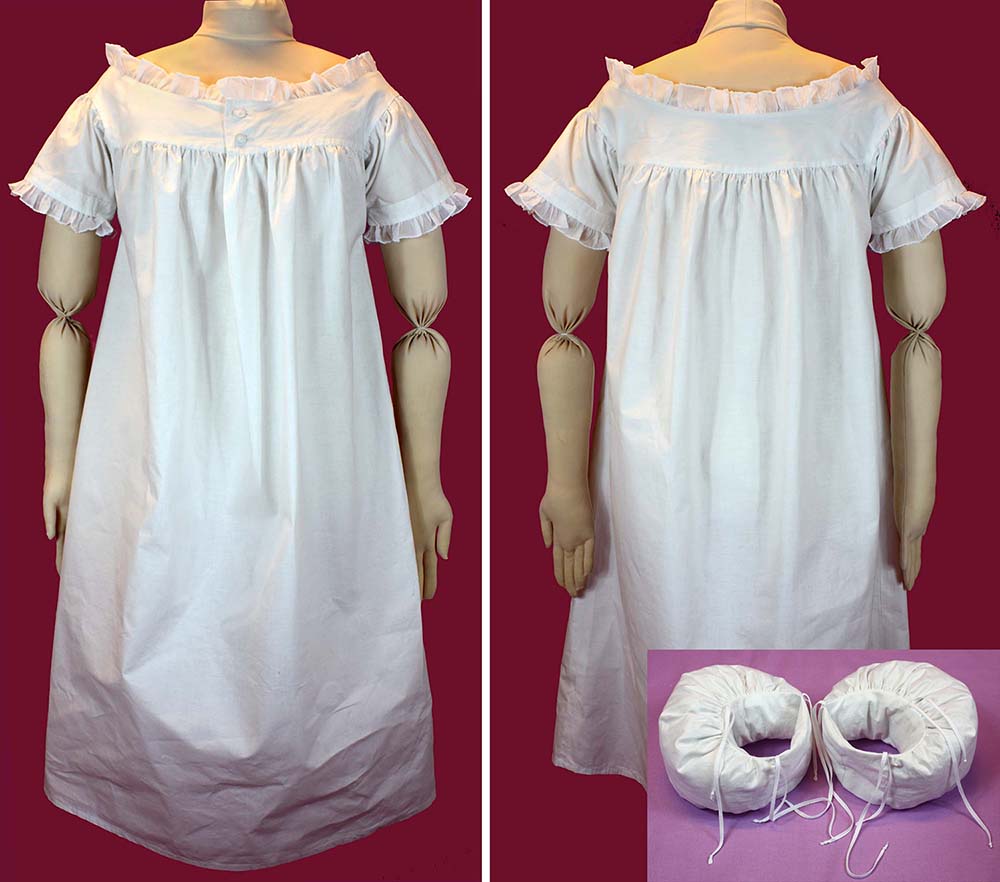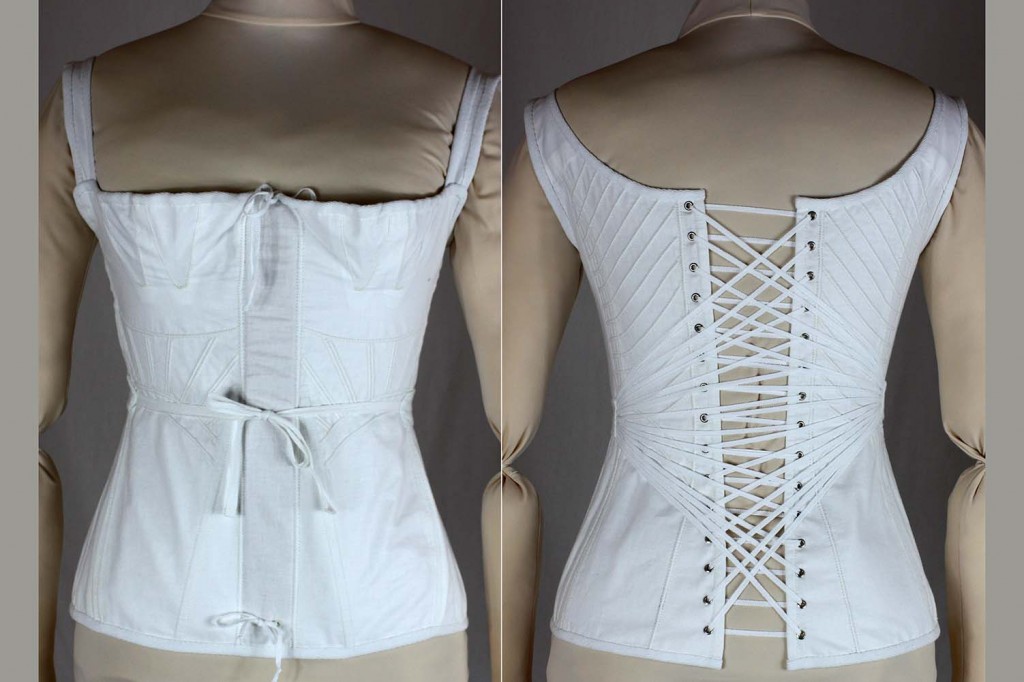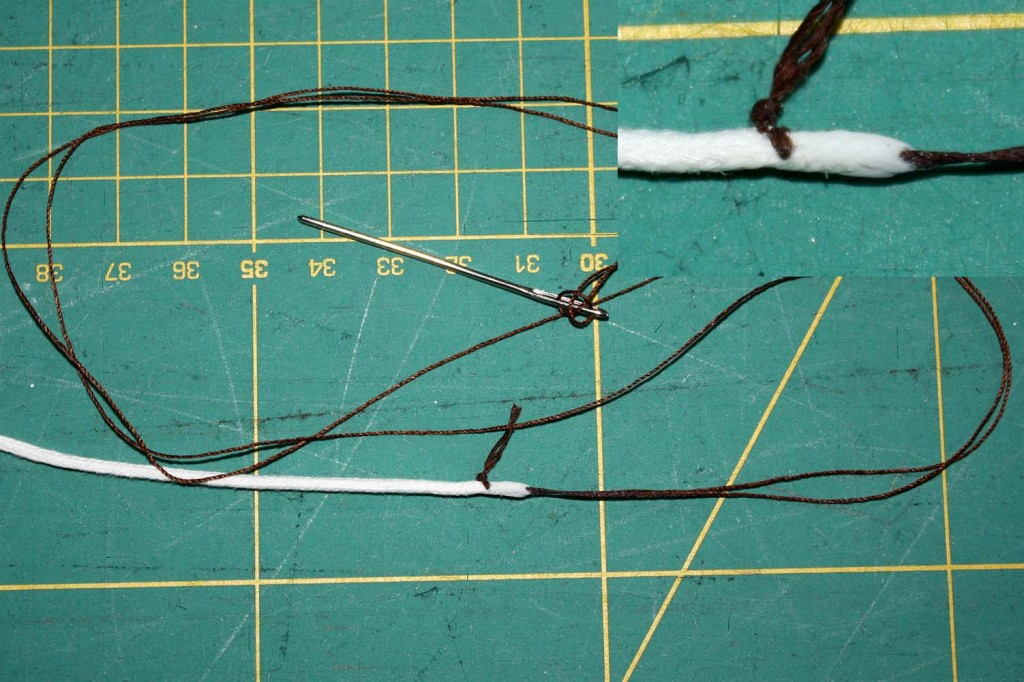The sewing pattern is available via Etsy.
I want to start with a simple shirt without a bib front. The picture shows a shirt from my collection. A bar covers the end of the button tab, underneath the bar the shirt front is laid into a box pleat. The bar can be shaped as desired, rectangular, or as shown on the picture.
Cut the front of the shirt T-shaped, take care to cut exactly on the straight grain. Fold both edges twice to form the button tabs and topstitch.
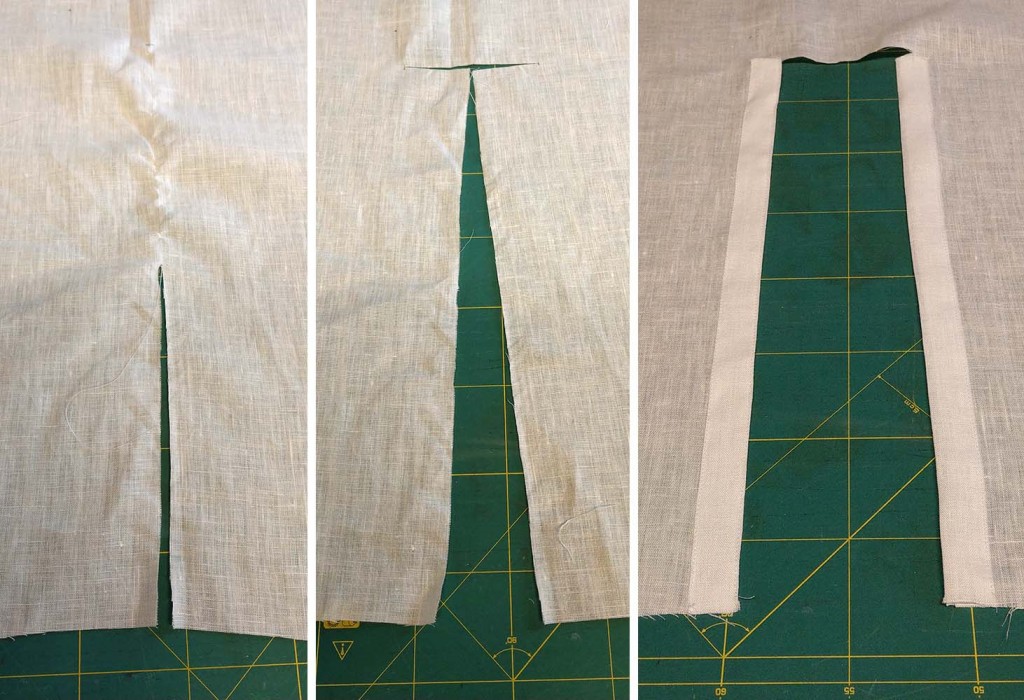
Line up the two tabs along the center front, left side is on top. Lay the excess fabric of the front into a box pleat. Fix the box pleat with some stitches to the end of the button tab. Take a piece of fabric for the bar, turn in the seam allowance and place on top of the button tab end. Attach with a prick stitch or a fell stitch. Cover the end of the button tab on the inside with a piece of fabric too.
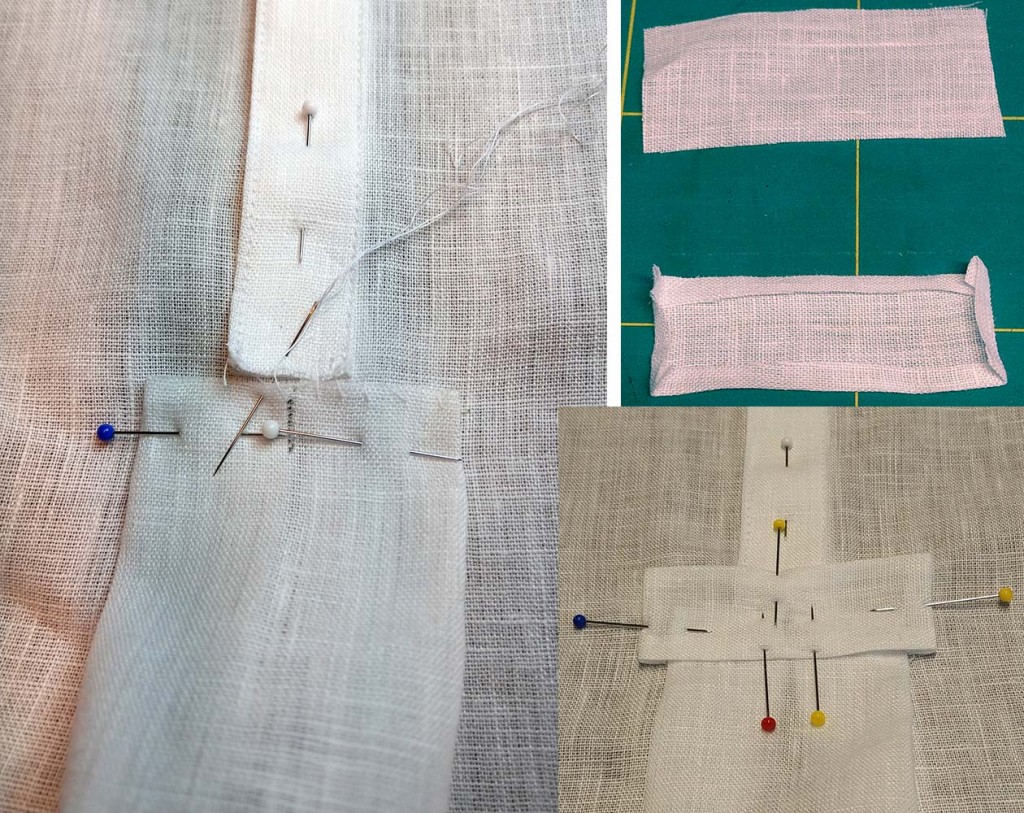 Continue reading
Continue reading

